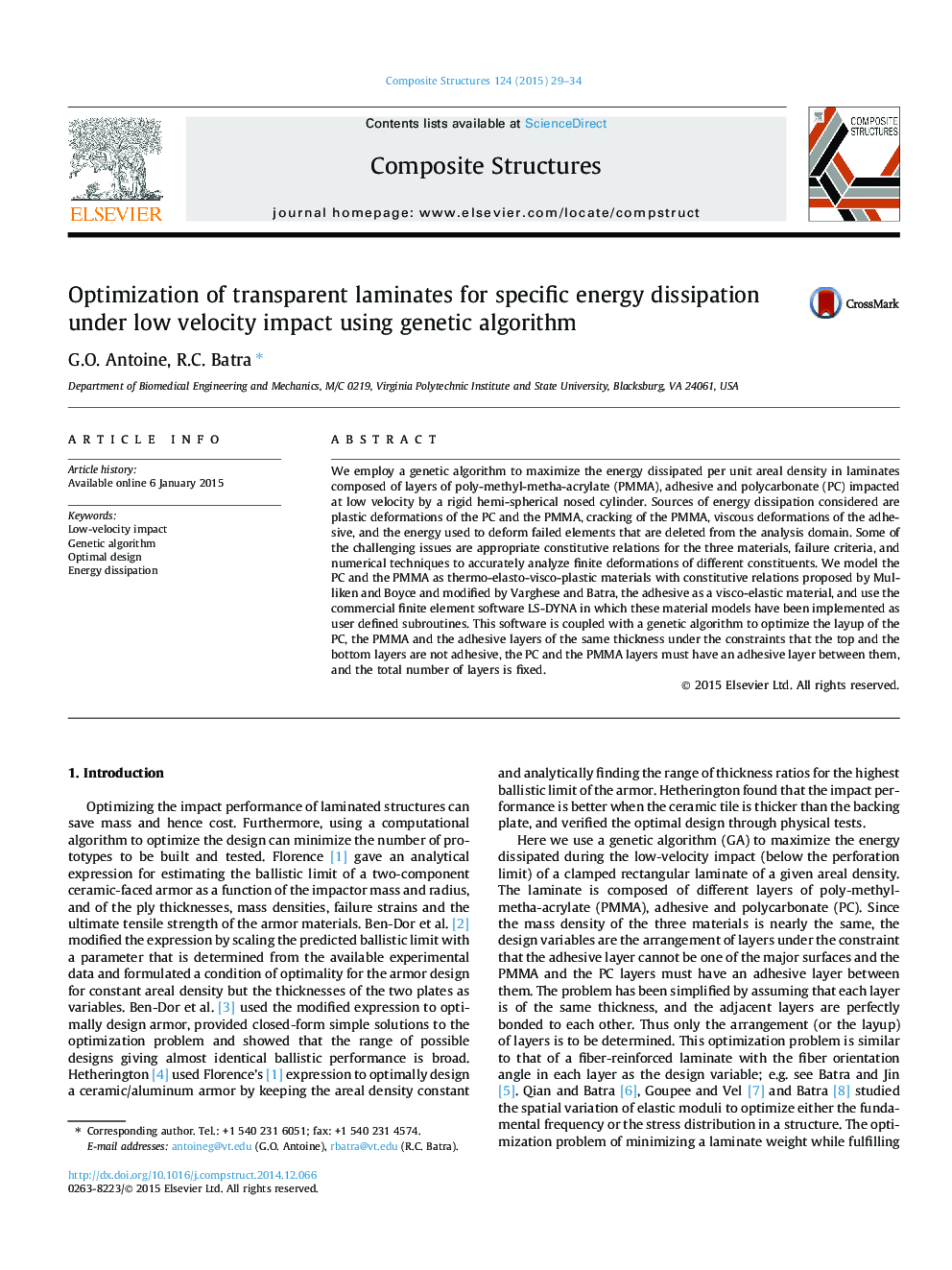| Article ID | Journal | Published Year | Pages | File Type |
|---|---|---|---|---|
| 6706838 | Composite Structures | 2015 | 6 Pages |
Abstract
We employ a genetic algorithm to maximize the energy dissipated per unit areal density in laminates composed of layers of poly-methyl-metha-acrylate (PMMA), adhesive and polycarbonate (PC) impacted at low velocity by a rigid hemi-spherical nosed cylinder. Sources of energy dissipation considered are plastic deformations of the PC and the PMMA, cracking of the PMMA, viscous deformations of the adhesive, and the energy used to deform failed elements that are deleted from the analysis domain. Some of the challenging issues are appropriate constitutive relations for the three materials, failure criteria, and numerical techniques to accurately analyze finite deformations of different constituents. We model the PC and the PMMA as thermo-elasto-visco-plastic materials with constitutive relations proposed by Mulliken and Boyce and modified by Varghese and Batra, the adhesive as a visco-elastic material, and use the commercial finite element software LS-DYNA in which these material models have been implemented as user defined subroutines. This software is coupled with a genetic algorithm to optimize the layup of the PC, the PMMA and the adhesive layers of the same thickness under the constraints that the top and the bottom layers are not adhesive, the PC and the PMMA layers must have an adhesive layer between them, and the total number of layers is fixed.
Related Topics
Physical Sciences and Engineering
Engineering
Civil and Structural Engineering
Authors
G.O. Antoine, R.C. Batra,
